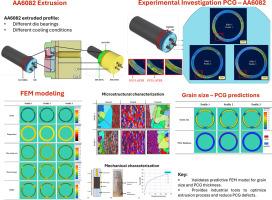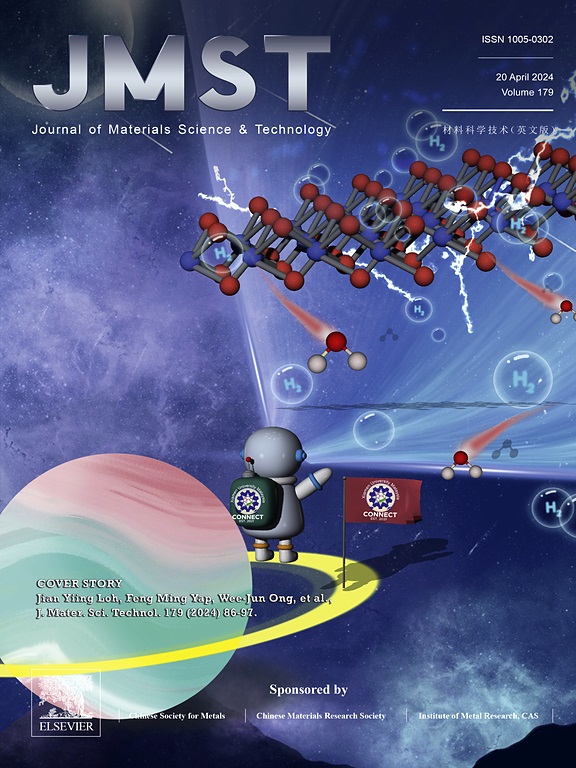Impact of die design and bearing geometry on grain size and PCG formation during extrusion of AA6082 aluminum alloy
IF 11.2
1区 材料科学
Q1 MATERIALS SCIENCE, MULTIDISCIPLINARY
引用次数: 0
Abstract
Grain size and formation of the Peripheral Coarse Grain (PCG) defect influence the mechanical and crash properties of extruded profiles. Controlling microstructural evolution during the extrusion of 6XXX series aluminum alloys is therefore essential to ensure the performance of structural components. In this work, three profiles with the same nominal geometry were extruded with a die comprising three different bearing geometries to create different extrusion conditions. Each profile was analyzed experimentally to gather data on the microstructure and mechanical properties. Bulge testing revealed that Profile 2, with the thickest PCG layer (490–1150 µm), exhibited worse mechanical performance, with a hoop strain at fracture of 0.08 and a peak load of 51.5 kN, compared to Profiles 1 and 3, which had higher hoop strains (0.13 and 0.14) and peak loads (56.1 and 57.6 kN, respectively). Finite Element Method (FEM) simulations of the extrusion process were carried out using Qform Extrusion UK with a post-processing subroutine developed and implemented to calculate additional parameters such as the stored energy, percentage dynamic recrystallization, grain size, and PCG formation based on standard output parameters from the simulation including strain, temperature and strain rate. The simulation demonstrated that the highest strain rate (40–220 s⁻¹) and stored energy (150,000–440,000 J m⁻³) in Profile 2 led to the thickest PCG layer. Based on these results, the proposed predictive model was validated against experimental data, demonstrating high accuracy in predicting PCG thickness and grain size while effectively capturing the influence of process parameters on microstructural evolution.

求助全文
约1分钟内获得全文
求助全文
来源期刊

Journal of Materials Science & Technology
工程技术-材料科学:综合
CiteScore
20.00
自引率
11.00%
发文量
995
审稿时长
13 days
期刊介绍:
Journal of Materials Science & Technology strives to promote global collaboration in the field of materials science and technology. It primarily publishes original research papers, invited review articles, letters, research notes, and summaries of scientific achievements. The journal covers a wide range of materials science and technology topics, including metallic materials, inorganic nonmetallic materials, and composite materials.
 求助内容:
求助内容: 应助结果提醒方式:
应助结果提醒方式:


